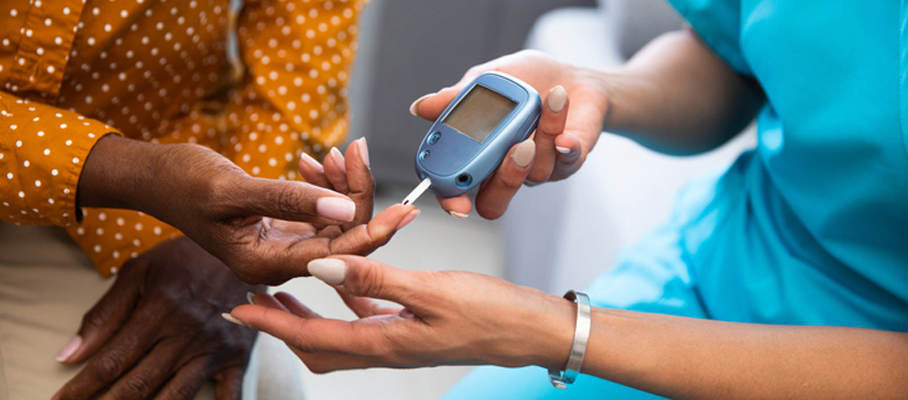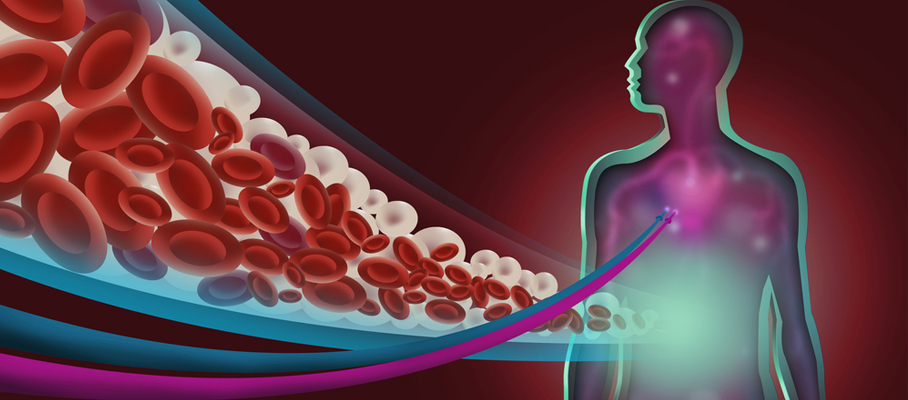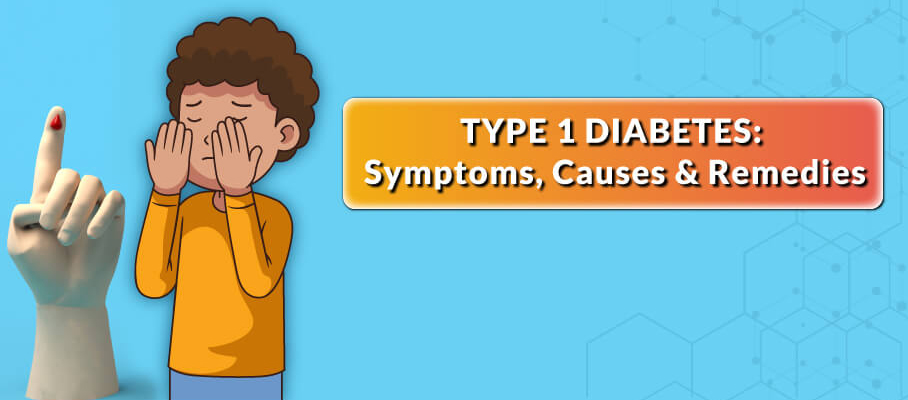
What Causes Low Blood Sugar: How to Manage & Prevention
Low blood sugar can be a frightening and potentially dangerous condition if not addressed quickly. It takes place when blood sugar levels drop below normal, causing symptoms such as shakiness, confusion, dizziness, cold sweats or even loss of consciousness. While hypoglycemia is more commonly associated with diabetes, it can also affect individuals without the condition under certain circumstances. In emergency situations, knowing how to respond promptly and effectively is crucial for ensuring your health and safety. In this blog, we'll explore how to manage low blood sugar in an emergency, the symptoms to watch out for, and the steps you can take to prevent and treat it.
What Causes Low Blood Sugar?

- Medication: For individuals with diabetes, insulin or other blood sugar-lowering medications can sometimes cause blood sugar to drop too low.
- Skipping Meals: Not eating for an extended period can cause your blood sugar to fall, especially if you’ve been active or exercising.
- Excessive Alcohol Consumption: Drinking alcohol without eating can interfere with your body’s ability to regulate blood sugar levels.
- Strenuous Exercise: Physical activity increases the body’s need for energy, and if blood sugar isn’t replenished adequately, hypoglycemia can occur.
- Illness or Infection: Being sick or infected can disrupt blood sugar regulation, especially if you're not eating properly or taking medications as usual.
- Renal dysfunction (due to diabetes) can lead to an increase effect of blood sugar-lowering medication
Symptoms of Low Blood Sugar
Recognising the early symptoms of low blood sugar is key to managing it in an emergency. These symptoms typically appear when blood sugar drops below 70 mg/dL (milligrams per deciliter) but can vary between individuals. Some common signs include:
- Shakiness or trembling
- Sweating excessively
- Sudden irritability or mood swings
- Dizziness or lightheadedness
- Weakness or fatigue
- Rapid heartbeat or palpitations
- Difficulty concentrating or confusion
- Headache
- Hunger or nausea
- Blurred vision
In more severe cases, hypoglycemia can cause symptoms such as:
- Unconsciousness
- Seizures
- Inability to communicate or respond coherently
- Inappropriate behaviour
It is important to note that some individuals, particularly those with diabetes, may not experience early warning signs of hypoglycemia (a condition known as hypoglycemic unawareness). In these cases, it is even more critical to monitor blood sugar levels regularly and take preventive steps.
How to Manage Low Blood Sugar in an Emergency
If you or someone else is experiencing symptoms of low blood sugar, acting quickly is essential. Below are the steps to take to address hypoglycemia effectively in an emergency:
Step 1: Check Blood Sugar Levels
Make sure to check your blood sugar immediately. This will help you confirm if the symptoms are indeed caused by hypoglycemia. If your blood sugar is below 70 mg/dL, it’s time to take action.
Step 2: Consume Fast-Acting Carbohydrates
The key to treating low blood sugar is to quickly raise your glucose levels. When you’re in an emergency situation, consume about 15-20 grams of fast-acting carbohydrates. These can include:
- Glucose tablets (usually available in most pharmacies)
- Half a cup (4 oz) of regular fruit juice (such as orange juice or apple juice)
- A cup of a regular cold drink (not a diet drink)
- 1 tablespoon of honey or sugar
- Hard candy (check the label to ensure it’s sugar-based, not sugar-free)
It’s important to avoid foods that contain fat or protein, as these will slow down the absorption of glucose.
Step 3: Wait and Recheck Blood Sugar
After consuming the carbohydrate, wait for about 15 minutes. The body needs time to absorb the sugar into the bloodstream and bring glucose levels up. Wait for another 15 minutes, and then check your blood sugar again. If it’s still below 70 mg/dL, repeat the process with another 15-20 grams of fast-acting carbohydrates.
Step 4: Eat a Balanced Snack
Once your blood sugar is back within a safe range (above 70 mg/dL), it’s important to eat a balanced snack if the next meal is more than an hour away. This snack should contain both carbohydrates and protein to maintain stable blood sugar levels. Good options include:
- A sandwich with whole-grain bread and peanut butter
- A small apple with a handful of nuts
- A cheese stick and whole-grain crackers
Step 5: Seek Medical Help if Needed
If the person experiencing low blood sugar does not improve after consuming sugar or loses consciousness, call for medical help immediately. Severe hypoglycemia can lead to a coma or seizures and requires emergency medical intervention.
If the individual is unconscious and cannot safely take food or liquids, never try to give them anything by mouth. Instead, call emergency services for immediate assistance.
Step 6: Follow Up with Healthcare Providers
After the episode of low blood sugar has been addressed, it’s important to follow up with a healthcare provider to understand the cause of the hypoglycemia. In people with diabetes, this may involve adjusting medications or modifying diet and exercise routines. For others, it may require testing for other underlying conditions that could be contributing to low blood sugar.
Preventing Low Blood Sugar
While emergencies can happen unexpectedly, there are steps you can take to reduce the risk of hypoglycemia in the first place. Here are some preventive measures:
- Eat Regular Meals and Snacks: Make sure to eat at regular intervals, especially if you're on medication that lowers blood sugar. Never skip meals, and aim for balanced meals with adequate carbohydrates, protein, and fats.
- Monitor Blood Sugar Regularly: If you have diabetes or are at risk of low blood sugar, monitor your blood glucose levels regularly. This helps you detect trends and avoid extreme highs or lows.
- Stay Hydrated: Dehydration can impact blood sugar regulation, so drink plenty of water throughout the day.
- Carry Glucose Tablets or Snacks: Keep fast-acting carbohydrates on hand at all times, especially when travelling or engaging in physical activity. Carry a small packet of glucose tablets, fruit juice, or candy to ensure you can address low blood sugar quickly.
- Avoid Excessive Alcohol: Limit alcohol consumption, particularly on an empty stomach, as it can cause blood sugar to drop.
- Adjust for Physical Activity: If you're planning to exercise, ensure that you have eaten a sufficient snack beforehand. Consider carrying glucose tablets or a small snack during long or intense physical activity.
Conclusion
Managing low blood sugar in an emergency is a matter of acting quickly and knowing the right steps to take. By recognising the signs and symptoms of hypoglycemia, consuming fast-acting carbohydrates, and following up with a balanced snack, you can help prevent the situation from escalating into a medical emergency. With careful monitoring, proper planning, and quick response, you can effectively manage low blood sugar and keep yourself or your loved ones safe in an emergency situation.
FAQs on Managing Low Blood Sugar in an Emergency
1. How can I recognise low blood sugar in an emergency?
Low blood sugar can cause shaking, sweating, dizziness, confusion, irritability, weakness, hunger, and rapid heartbeat. In severe cases, unconsciousness or seizures can occur.
2. How quickly does blood sugar rise after eating fast-acting carbs?
Blood sugar typically begins to rise within 10-15 minutes after consuming fast-acting carbohydrates. If it's still low after 15 minutes, repeat the process.
3. Can I give someone low blood sugar if they are unconscious?
No, never give food or drink to an unconscious person, as they may choke. Instead, call emergency services immediately.
4. How can I prevent low blood sugar episodes?
Prevent low blood sugar by eating regular meals and snacks, monitoring blood glucose levels, staying hydrated, carrying glucose tablets or snacks, and adjusting your medication or exercise routines as needed.
5. How frequently should I check my blood sugar to prevent emergencies?
If you're at risk of low blood sugar, check your blood sugar regularly—especially before meals, during physical activity, and before bed. Follow your healthcare provider's advice for personal monitoring schedules.
6. When should I seek medical help for low blood sugar?
If symptoms persist despite treatment, or if the person becomes unconscious, experiences seizures, or cannot respond, seek immediate medical assistance.



